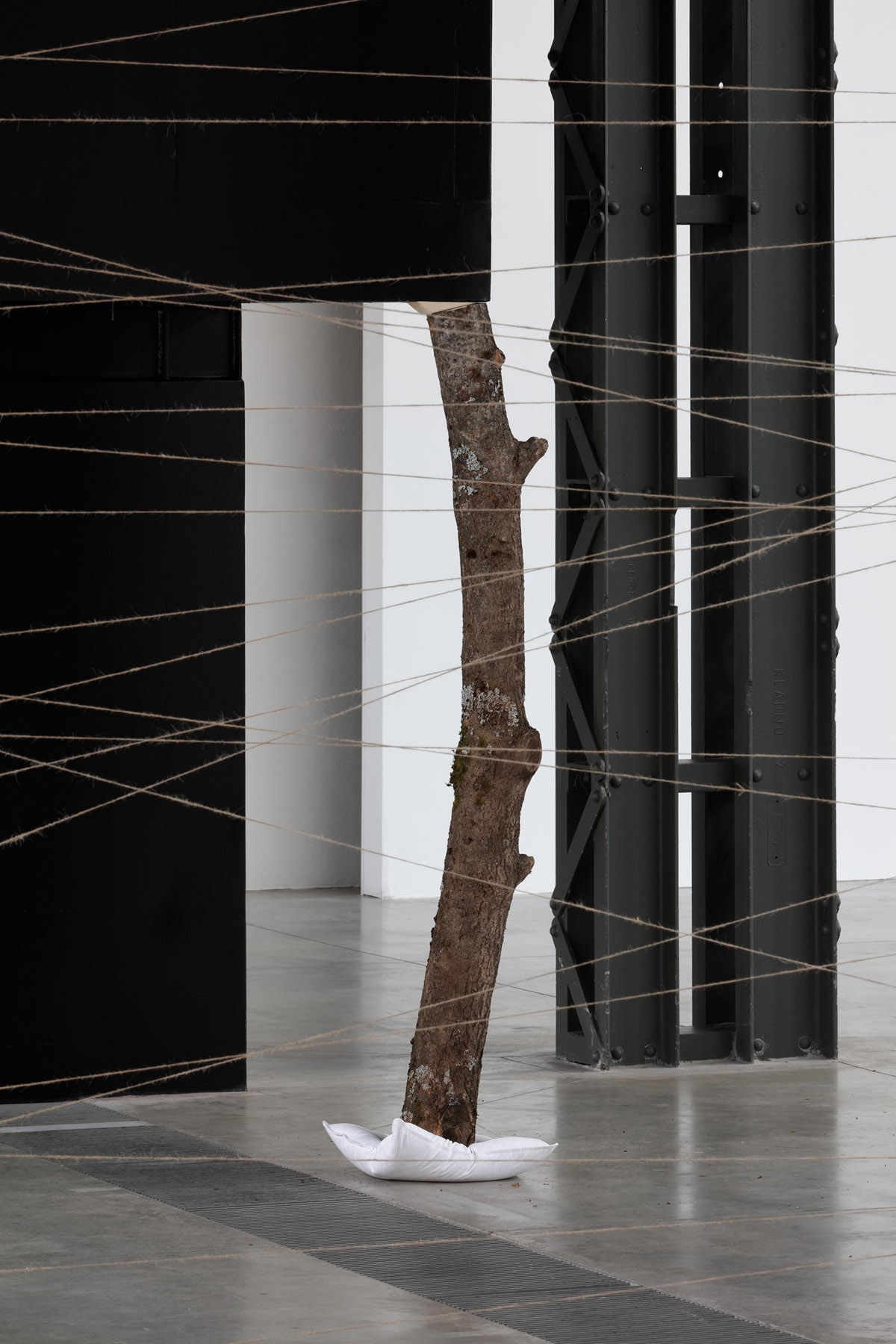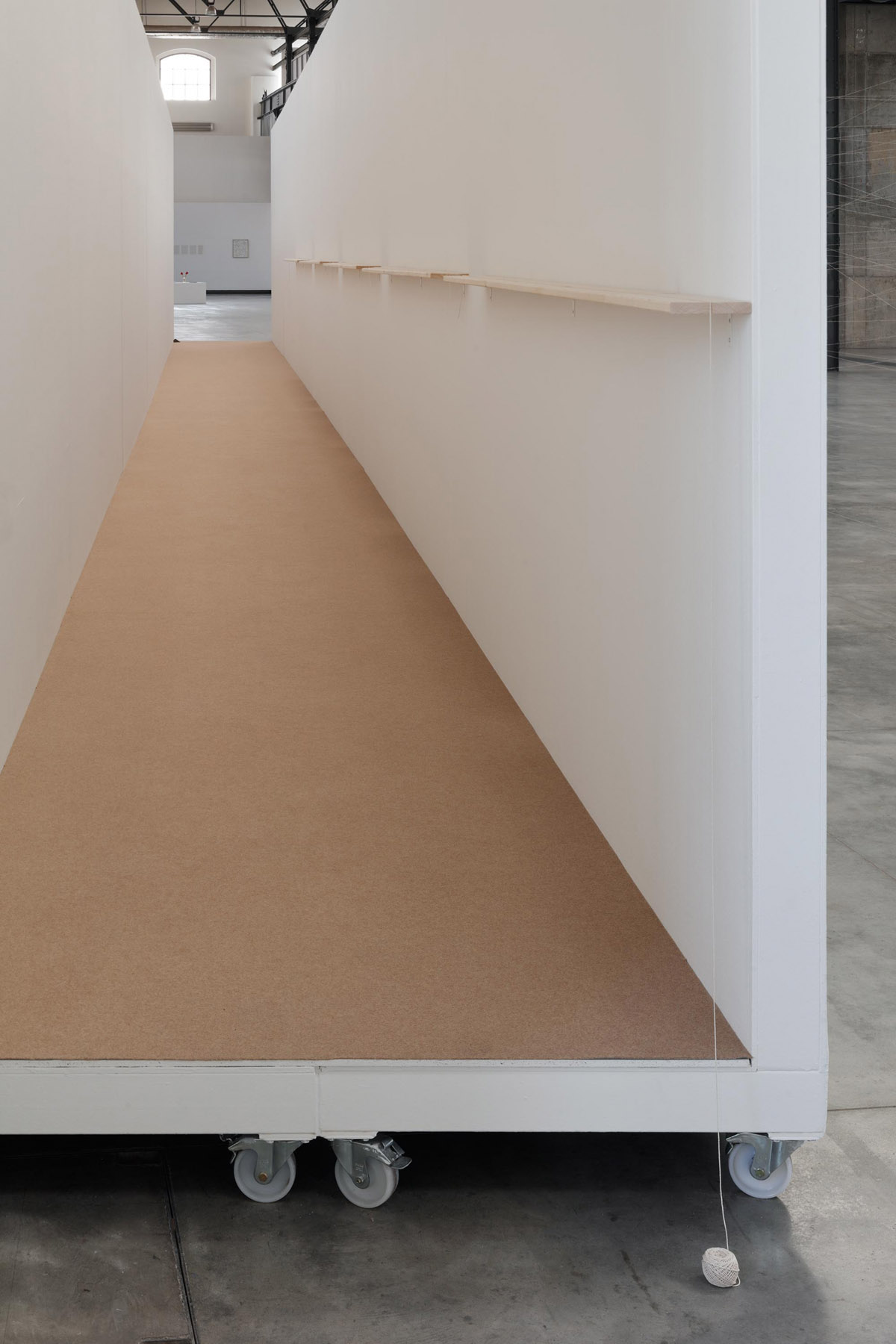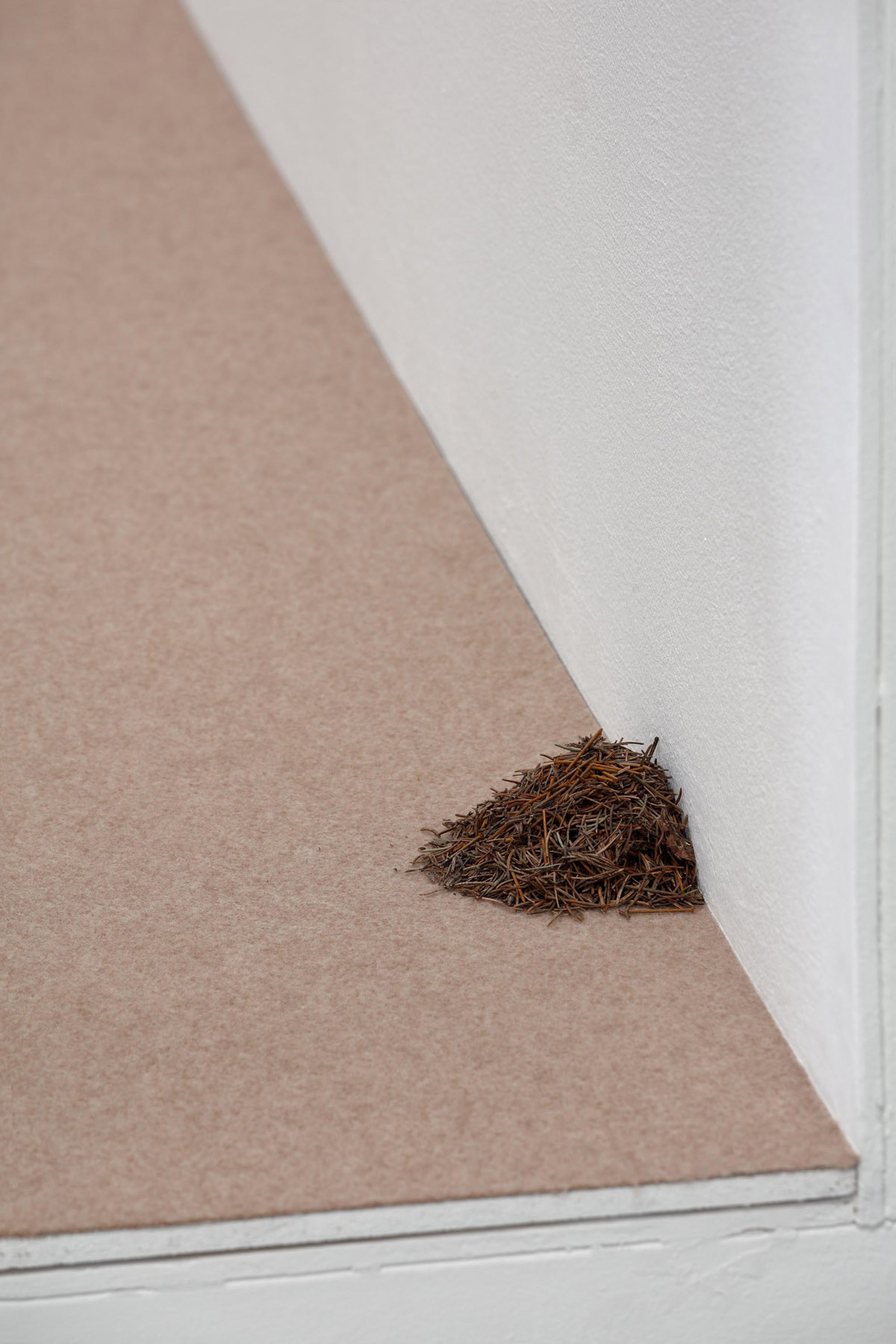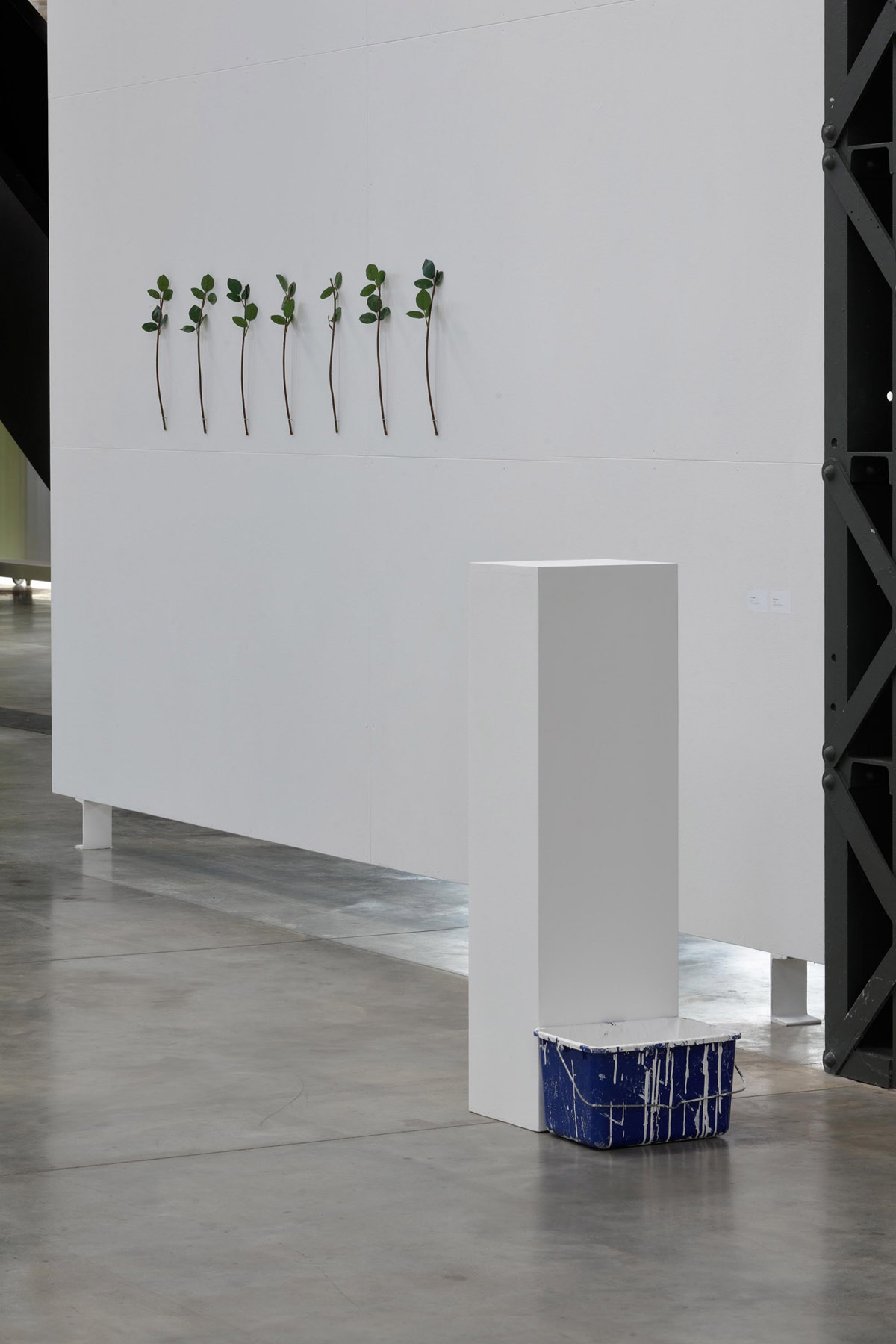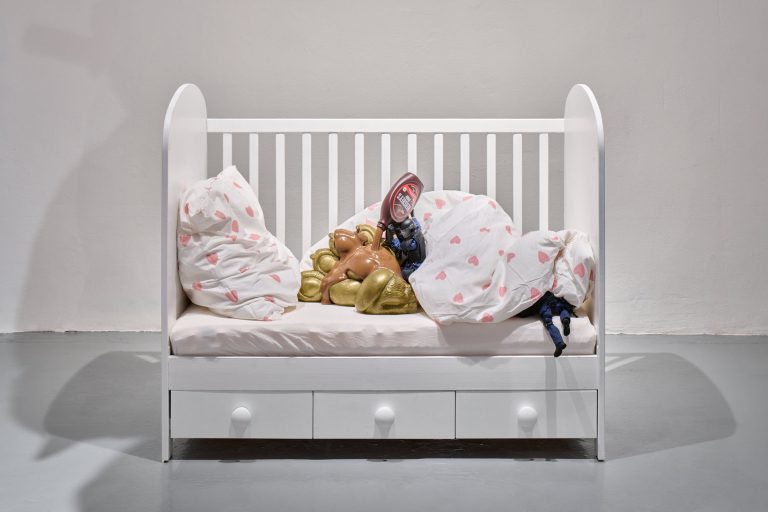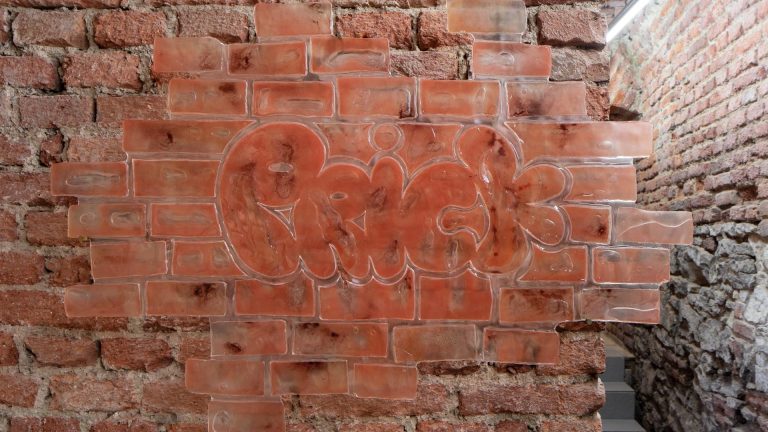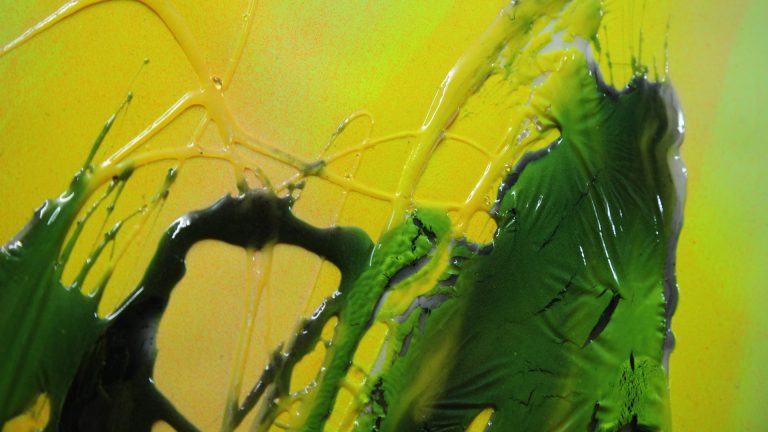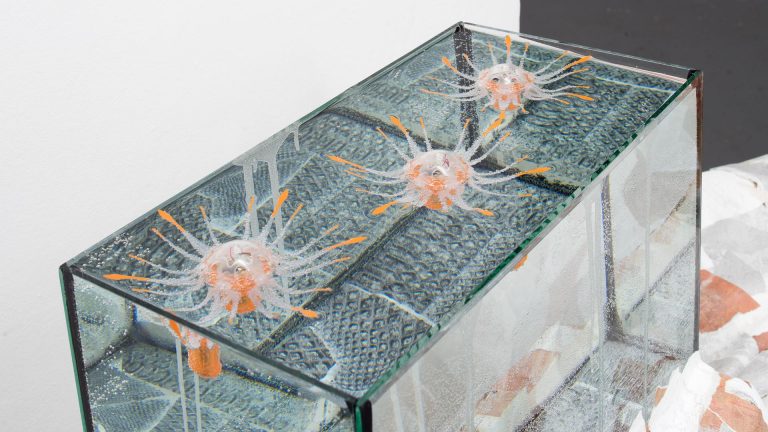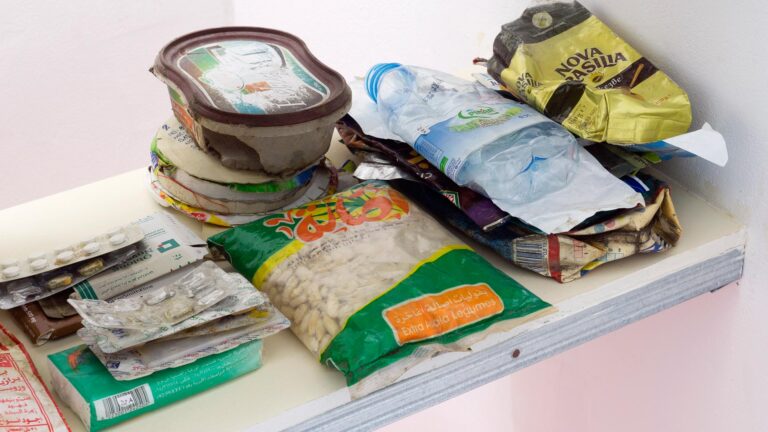Artist: Jiří Kovanda
Exhibition title: Ten Minutes Earlier
Curated by: Denisa Kujelová
Venue: Fait Gallery, Brno, The Czech Republic
Date: October 8, 2020 – April 10, 2021
Photography: all images copyright and courtesy of the artist and Fait Gallery, Brno
Jiří Kovanda’s work is typified by several trademark aspects which manifest themselves continuously, from early actions and installations through postmodern drawings and paintings, collages, assemblages and objects of the 1990s to the current interventions, installations and performances: inconspicuousness, efforts at contact, humbleness, simplicity, spontaneity, sensitivity, humour and manipulation with ego.
The austere rendering of low-key, almost indiscernible installations and interventions is already apparent in Kovanda’s early actions in which he examined the most elementary possibilities of nonverbal communication. Back in the 1970s, the philosopher and art theorist Petr Rezek pointed out an interesting fact, saying that Kovanda’s actions signified, above all, a desire for contact. At the same time, they are set not to be fulfilled: they were often conceived so that they forced the artist to work with his natural shyness and to go beyond this mental barrier. The participants were placed in unknown situations outside the framework of art, or situations which through their non-diversion from normal behaviour remained invisible for viewers, and were only made visible by their subsequent documentation by means of photography and presentations in gallery contexts.
Photodocumentation was crucial in the next phase of Kovanda’s work in which his physical presence was gradually replaced by mere records of his activity. With installations intervening in private and public environments without the presence of viewers, photography presented the only possibility of recording the artist’s traces in the form of various objects of daily use and trivial materials installed completely inconspicuously in different places, both outdoors and indoors, also regarding the indiscernibility and ephemerality of these interventions. The artist already articulated his completely natural strategy of creating an unexpected context for an object and leaving a trace of his activity in his early works such as fallen leaves stuck to the ground with a sellotape, wooden wedges inserted between cobblestones and a pile of pine needles and nails in the forest, or interventions in interiors, for example, a flower pot hidden behind a pillar[1], a string tied around the same pillar two months later and a white string stretched across a room in Kovanda’s home.
Kovanda’s actions frequently involved banal situations, ordinary activities and mundane tasks that we do automatically, yet acted out in a shifted context. Likewise, in his installations and interventions the artist shifts ordinary, routinely used objects to a completely new, unexpected level by removing them from their original situation and taking away their primary utility function.[2] Thanks to his work in the National Gallery depository[3] Jiří Kovanda first started to use in his installations material related to installation practice in the everyday gallery run, for example strings, paper, glass and wooden wedges. He also employs things of daily use and household objects including foods in his current installations and interventions, along with objects typical of a particular place[4]. Through them he makes a space more visible and defines its individual parts, and thus also slightly manipulatively determines how a particular space and its layout is perceived by viewers and sets a new manner of movement in this space. Jiří Kovanda’s installations are not rooted in an idea of a certain place suitable for or adjustable to a particular work; instead, he executes an idea and the preparation of a situation which is to make up the base of a new project, or of the employment of some of his older works, directly on the spot. This is also the case with the central installation Gold Ring which, perhaps most of all the works on display, prompts a reflection of values, in a metaphorical comparison of a string and a ring, an ordinary thing and an exceptional object. Everything has the same value, all depends on context and interpretation.
[1] It was a provisional gallery space in Provaznická Street. The basement room of the Odeon publishers where Jan Mlčoch worked from 1978 was originally designed as an archive, and until Mlčoch’s resignation in 1980 was used by three Prague body artists (Karel Miler, Petr Štembera and Jan Mlčoch) as a meeting place. They staged there their own performances as well as those by their close friends, including Jiří Kovanda.
[2] In this respect, a key role in Kovanda’s art was played by Marcel Duchamp’s exhibition in the Václav Špála Gallery in 1969, prepared by the chief curator Jindřich Chalupecký in collaboration with the Milan art collector, gallery owner and art theorist Arturo Schwarz.
[3] In 1977 Karel Miler got Kovanda a job in the National Gallery in Prague; he was responsible for a depository housed in the Municipal Library. Kovanda worked there until 1995 when he became an assistant professor at the Academy of Fine Arts, in a studio headed by Vladimír Skrepl.
[4] Not surprisingly, the artist’s installations tend to be confused with ordinary things accidentally left in a space, and as such must be carefully protected from the over-enthusiastic cleaning staff.


















